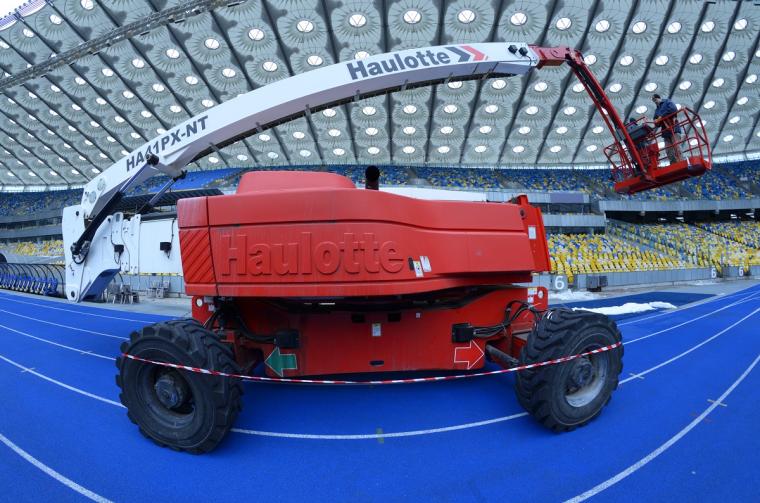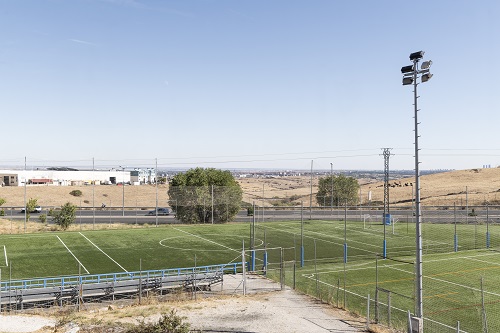
We’ve heard plenty of complaints about noise pollution and parking problems caused by sports facilities that are located in neighborhoods. But one of the hottest hot buttons, and the one that tends to raise the most concern, is lighting. And for cities who want to use their sports complexes to attract tournaments, it’s something that has to be addressed sooner, rather than later.
Lighting, as it turns out, is a two-edged sword. It allows venues and event owners to schedule more efficiently, packing more games into one day and minimizing the duration of tournaments (thus making them more appealing to parents who are taking off work to bring their children to participate). It makes venues more appealing to event owners since they know that even in seasons with an earlier sundown, schedules can be accommodated. And it makes the venue safer, even if games do end later.
The problem, however, is that good lighting does not necessarily make good neighbors. The lights that give an almost daylight look to a night-time game often bother those near the venue.
In Millersburg, Pennsylvania, for example, Athletic Business reported that it was Mayor David Aichele who cast the tie-breaking vote at a recent Millersville Borough Council meeting, allowing Millersville University to increase the height of stadium lights from 35 feet to 80 feet at Cooper Field Stadium without first obtaining a variance.
Lancaster Online noted that the field is used by Penn Manor High School’s baseball program for practices and games when the high school’s field is too wet. Additionally, the field is used by youth baseball clinics and coaching clinics. Last year, the venue hosted 183 baseball games, 157 of which were unrelated to Millersville University or NCAA.
Council member Maggie Weidinger questioned the benefit of the stadium to borough residents and was concerned about the increased traffic and the increased lighting, which she said would be “terrible” for borough residents.
“Don’t infringe on our borough residents any more than you already have,” Weidinger said.
 It’s a story that is repeated nationwide. Generally, there are three main components to complaints:
It’s a story that is repeated nationwide. Generally, there are three main components to complaints:
- Light trespass, also known as spill, is just what it sounds like: lighting that extends further than it should, illuminating nearby yards and being visible to those inside their homes;
- Glare, not to be confused with light trespass, is what a person experiences when lighting causes temporary problems seeing things. One example is when a baseball player loses sight of a ball because he is looking up into the sky and the lighting makes it impossible for him to focus on the ball – although it can just as easily bother someone in a nearby house who is unable to look across the street properly because of the bright lights;
- Glow, also known as sky glow, is the bright light one sees above the lights from a distance. This is actually a result of the light catching moisture and particulate matter in the air and illuminating it. (Depending on where the venue is located and what the weather is like, this phenomenon may be more pronounced at some times than others).
The sport being played, and the level of play, will have much to do with the amount of lighting required. Anything that will be used on broadcast television – college bowl games, for example – is held to a higher standard for lighting. Fortunately, today’s lighting can be set for higher or lower levels, depending upon what the field is scheduled to host.
Lighting manufacturers have found themselves called upon to speak at community meetings – often bringing presentations showing the flexibility of newer lighting systems and the lowered impact such systems have upon communities. (Unfortunately, many residents are often thinking of lighting as the high-mast incandescent lamps used at old ballfields – and not as the current LED fixtures which are easier to direct, more energy efficient and which result in far less glare and light spill).
In Vacaville, California, an article in The Reporter discussed what transpired at a neighborhood meeting about new ball field lighting for local venue, Centennial Park. Neighbors expressed a desire for timers for the lights and the baseball league’s access to the lighting as well as including more parking lot lighting and pedestrian lighting for players and families leaving night games.
The sport being played, and the level of play, will have much to do with the amount of lighting required. Anything that will be used on broadcast television – college bowl games, for example – is held to a higher standard for lighting. Fortunately, today’s lighting can be set for higher or lower levels, depending upon what the field is scheduled to host.
Lighting manufacturers have found themselves called upon to speak at community meetings – often bringing presentations showing the flexibility of newer lighting systems and the lowered impact such systems have upon communities. (Unfortunately, many residents are often thinking of lighting as the high-mast incandescent lamps used at old ballfields – and not as the current LED fixtures which are easier to direct, more energy efficient and which result in far less glare and light spill).
The Illuminating Engineering Society has standards for lighting of sports at various levels, and is another frequently-cited resource.
As the sports tourism market continues to grow, expect the issue to continue to rear its head. Expect, too, that another issue that will be a concern to communities is that of the ambient noise that also accompanies night games. (And with the exception of having a roofed stadium, there isn’t much that can be done about that).

